Population Genetics and Ancient DNA
My recommendation for the year is Razib Khan’s blog on population genetics and ancient DNA1. He deep dives on a different ancestry group every other week.
I know a few guys who started reading about this stuff but got a little bored. It doesn’t help that the labels given to some ancient groups feel non-descriptive. More annoyingly, there are often several names for what seem like the same group2. It can be a little hard to care about a “Steppe pastoralist” or an “Anatolian farmer” that lived a zillion years ago even if he was supposedly your great-great grandfather or whatever3. Tbh, I’m not even sure if I know what a pastoralist is.
Funnily enough, it was the Polynesians that sparked my interest in this stuff (which, unfortunately, Razib Khan hasn’t written much about). It turns out to be useful case study for a couple of reasons: It illustrates some of the general population genetics mechanisms and it tells us new things about history which we don’t have written records for.
Polynesians and Melanesians
The most famous Polynesian is The Rock whose mother is Samoan. He’s also part black (African ancestry) from his father so he’s only partly Poly-saturated.
Those of us with kids or younger siblings were exposed to Polynesia via the movie Moana (which The Rock voice stars in).
Polynesians are people from islands in the Pacific Ocean. Specifically, the islands that fall within a triangle that goes from New Zealand in the South West (the Māori, famous for the haka) to Easter Island in the East (famous for their giant statues) to Hawaii in the North (famous for their Americanness).
As you can see, we also have Melanesia in the dark blue blob and Micronesia (which I’m going to ignore) in the red blob.
Who are the Melanesians? The etymology "Mela-" comes from the same root as “melanin”. Melanesians are darker skinned than Polynesians because they’ve been in the neighbourhood for longer. They’re from Papua New Guinea4 , the Solomon Islands and some of the surrounding islands.
Fiji is in the borderlands of the two regions. Fijians are a bit of a mixture ethnically: They’re mostly Melanesian but have some Polynesian too.
Polynesians and Melanesians have a radically different migration story. Melanesians arrived much earlier. They arrived to Papua New Guinea around 40-50,000 years ago (which was likely part of the same land bridge migrations as the closely related Australian Aboriginal people). Over the next 10-20,000 years, the Melanesians expanded from Papua New Guinea to the Solomon Islands. This was much more doable compared to colonising the rest of the pacific as the Solomons are close together and mountainous: You can see the next one from the mainland.
Polynesians, on the other hand, didn’t come to this side of the world until relatively recently. They originally came from Taiwan about 4,000 years ago which was around the time that Abraham was supposedly herding goats and cutting deals: ~2,000 BC.
Taiwan feels a bit odd at first: The people who currently live in Taiwan are Han Chinese and Samoans don’t feel all that Chinese-y. However, 3% of Taiwan’s population is indigenous Taiwanese5. The descendants of Polynesians were called the Lapita people who share a recent ancestor with the indigenous Taiwanese.
Lapita people left Taiwan, travelled south through Philippines and then ended up in the Western Pacific. They are a subset of the Austronesians who migrated all over the place: Malaysia, Indonesia, even Madagascar. The Lapita people are identified by the pots they used. One thing you get used to with this stuff is that most ancient people are named after pots. They’re called things like the big pot people or the bell pot people or the pot-with-beads in it pot people.
Interestingly, modern day Polynesians are actually part-Melanesian. A Polynesian today - let’s say a Tongan or Samoan - has about 25% Melanesian DNA on average. So they’re 3/4 Lapita ancestry and 1/4 Melanesian.
We’re left with the question as to when this mixing event happened.
The standard story is that it happened early on in the Lapita’s travels. It’s called the “slow boat” thesis. It seems reasonable. Melanesia is on the way after all. Meander through the Solomon Islands, mix with locals, make some pots, then paddle east out into the infinite oceanic abyss leaving everything familiar behind.
Fortunately, we can now test this thesis. We can test the DNA of ancient people too which allows us to piece together potential migration patterns.
But before we get to that, let’s quickly look at different types of DNA.
Male and Female lineages
When we measure people's DNA, we can look at different types:
Y chromosomal DNA
Mitochondrial DNA (mtDNA)
This is DNA that you inherit from your male line and your female line respectively. DNA from your male line isn’t simply the DNA from your father. It’s comes from your entire male line. So it comes down through your father and your grandfather (but not your grandmother) and your great grand-father etc.
Mitochondrial DNA (ie mtDNA) is the same sort of thing but from your female line.
Another piece of jargon you might see is “Autosomal DNA” which simply refers to overall DNA.
So when we take group samples, we can compare these different types.
Quick detour to Mexico
The average Mexican alive today is about half European and half Amerindian admixture. This is not to say that they have one white parent and one brown parent. Their parents probably also have about 50/50 admixture and look like they do. Rather, many generations ago there was mixture between Meso-Americans and Spanish Conquistadors.
The 50/50 estimate is based on the average Mexican’s autosomal DNA (ie, their full DNA). However, when you measure a Mexican’s Y-Chromosol DNA (which they get from their male line), it’s more like 70% European. In contrast, when you measure their mtDNA (from the female line) it’s more like 10% European.
(This is done at a population level: ~70% of the male ancestors of Mexicans are European rather than 70% of the male line of a particular person.)
These findings match up with what we already know from written history. Hundreds of Conquistadors—who were almost entirely men—sailed over the Atlantic, arrived in the Americas, spread deadly and contagious diseases, got into some skirmishes, didn’t making many pots, and mixed with some of the locals. They key being that it was mostly the local women doing the mixing.
(The reason why North America is much more white compared to Central and South America is because most settlers to the American colonies came over as families. Spanish Conquistadors were mostly men so they had kids with the locals.)
That’s reassuring. Our DNA samples are telling the same story as the history books.
Back to the Pacific
Unlike the Conquistadors, we don't have a written history of the Polynesian explorers. There are oral histories but it can be hard to triangulate things like where exactly Hawaiki might have been and who exactly made which pots.
But there’s no hiding with DNA.
Like we did with the Mexicans, we can compare the male and female lineages in Polynesians. It’s roughly:
Autosomal DNA: 25% Melanesian
Y-chromosomal DNA: 60% Melanesian
mtDNA: 15% Melanesian
So we know that a Polynesian person’s Melanesian ancestors were mostly male. Their Lapita ancestry is mostly female.
At some point, Melanesian men mixed with Lapita Polynesian women. It’s useful to hypothesise why that might happen. First let’s take a quick look at ancient DNA.
Ancient DNA
The big revolution over the last few decades is that we can now test the DNA of really really old people. Not as in centurions like Henry Kissinger or ambiguously aged specimens like Bryan Johnson or Taylor Lorenz. Proper old. Like, older than Socrates old.
Sampling really old people can tell us who moved where, what mixing went on, and when it all happened. Dig up some dusty old bones, send it to the lab, squeeze a bit of lemon juice on top, swab the results. Simple as.
(Somewhat ironically, ancient Egyptians are one of the hardest people to test because the chemical mummification process, which kept them looking so fresh all these years, actually spoils the DNA6.)
It turns out that people living in Tonga around 3,000 years ago have no Melanesian DNA. Nada. Or at least next to nothing. The Bronze Age7 Jonah Lomu living in 1,200 BC didn’t have the 25% Melanesian that the modern Jonah Lomu had who was living in the year 2000.
This finding is sort of a big deal because it maybe blows up the slow boat thesis. The Lapita people came down through the Philippines8, skipped the Melanesian islands (or at least didn’t mix with anyone9), and went to the Western pacific (Samoa and Tonga). Let’s call it the quick boat thesis for now for lack of a better label.
But from 1,000 BC onwards, ancient Polynesians do have Melanesian admixture.
We can start to piece together what probably happened. At some point ancient Melanesian men conquered the ancient Lapita Tongans and Samoans. They likely killed off the most of the local men and took their women. Their sons may have repeated this process on nearby islands. Nasty stuff, but par for the course of human history.
20th Century Academia
Disciplines like anthropology and sociology went slightly off the boil in the 1900s. The notion that human prehistory was full of violent conquests became something we don’t talk about. The “father of American anthropology” Franz Boas - who essentially founded cultural relativism - was influential in spreading the now widely held idea of the “noble savage”. The idea that we start of peaceful and society or capitalism makes us kill everyone.
His student, who's maybe more famous than he is, Margaret Mead actually earned her chops studying people in Samoa in the 1920s. She concluded that there were relaxed sexual norms and sex differences were all culturally determined.
In the 1980s, Derek Freeman, an anthropologist from New Zealand, criticised Mead’s work. He pointed out that her stay was short, her methods were flawed, adolescence is obviously impacted by biological things like hormones, Samoan culture was far from sexually permissive, and Mead was likely hoaxed by some teenage girls having a bit of fun. There’s an ongoing debate in academia and the beef even inspired an Australian play.
That’s all to say that the cultural relativism stuff that’s served up with your orange juice these days has been around for a while academia. One of the impacts was that for the last 60 or so years in anthropology or sociology there has been ideological pressure against considering the idea that indigenous people may have been violent or even that ancient people may have been violent.
And yet it moves.
A large wallop of Melanesian DNA came in after some Lapita people settled in the Pacific. And it came via the men. Like the Spanish in the Americas 500 years ago. The Steppe Pastoralists in Europe 5,000 years ago. The Anatolian farmers in Europe 10,000 years ago. You get the idea.
We could attempt to save the peaceful migration hypothesis by claiming that the Lapita men simply stepped aside and offered up their women to their new friends. Greg Cochran calls this line of thinking “hand-waving matrifocal cultural bullshit”.
Sam Burja has this quip that Robert E Howard's Conan the Barbarian series is closer to describing actual prehistory than all of 20th century anthropology.
Regardless of where you land, after this mixing event happened, the descendants then colonised the rest of the pacific (which was empty). These people have the Melanesian component.
Expanding through the pacific is totally insane, mind you. Look at it.
The descendants from the mixing event then sailed east to Tahiti (French Polynesia). From there, some of them went North to Hawaii, some East to Easter Island and some south-west to New Zealand.
The Polynesians were maybe the most impressive seafaring people ever rivalled only by the Vikings.
(I’ll throw a quick caveat out there that since population genetics is a relatively new field, things can change.)
If you’re totally fresh to the topic, the best first port of call might be rockstar Harvard geneticist David Reich’s Who We Are and How We Got Here.
Yamnaya, Corded Ware, Aryan, Proto-Indo Europeans, and Steppe Pastoralists.
Probably a few more greats.
New Guinea was named after Guinea in Africa because the inhabitants resembled Africans to European explorers.
My Taiwanese colleague is actually 1/4 indigenous Taiwanese and 3/4 Han Chinese.
This was during the Bronze age period but Polynesians were still stone age technologically.
The reason we know these sorts of migration patterns is similar ancient DNA testing.
There are Lapita pot remains found in the Solomon islands. So some of them did stay, but the ones who made it to Tonga didn’t do any mixing.




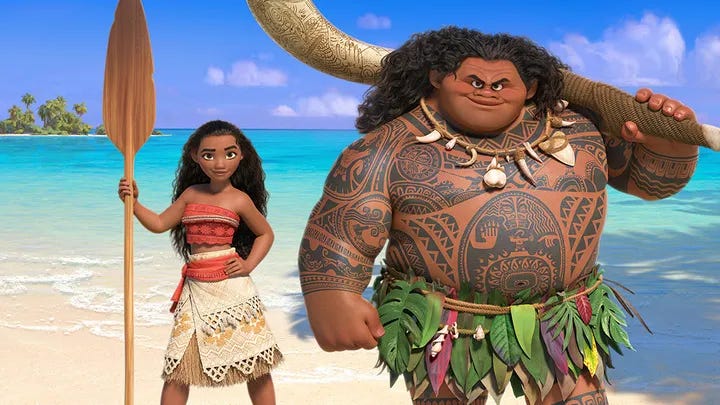

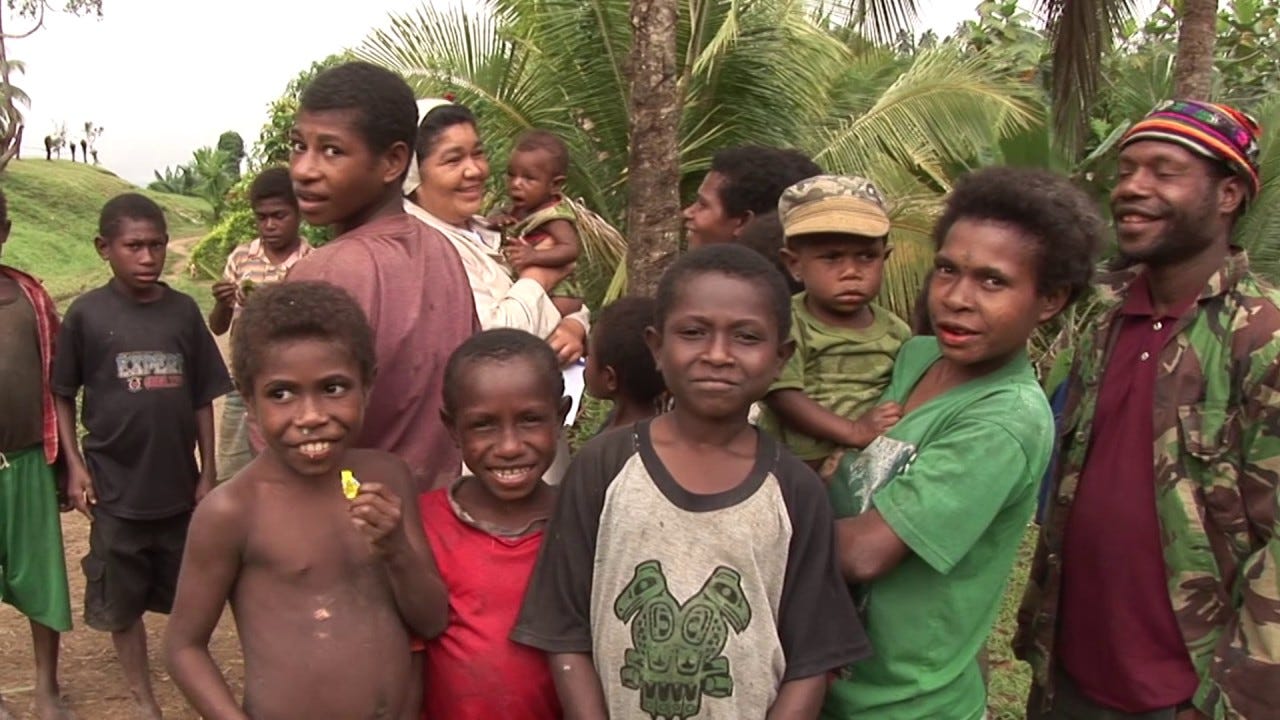



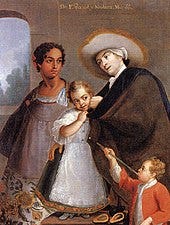

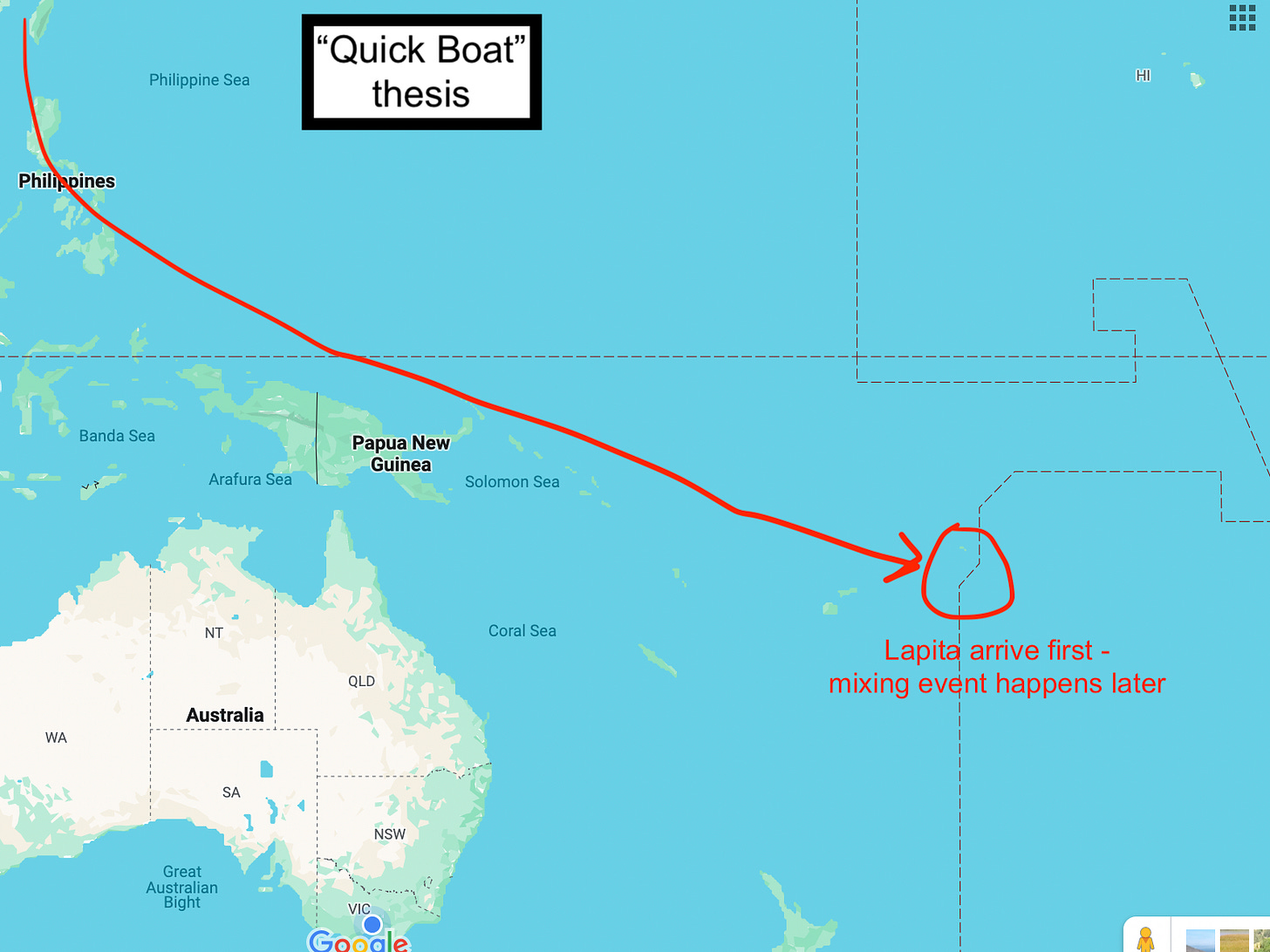
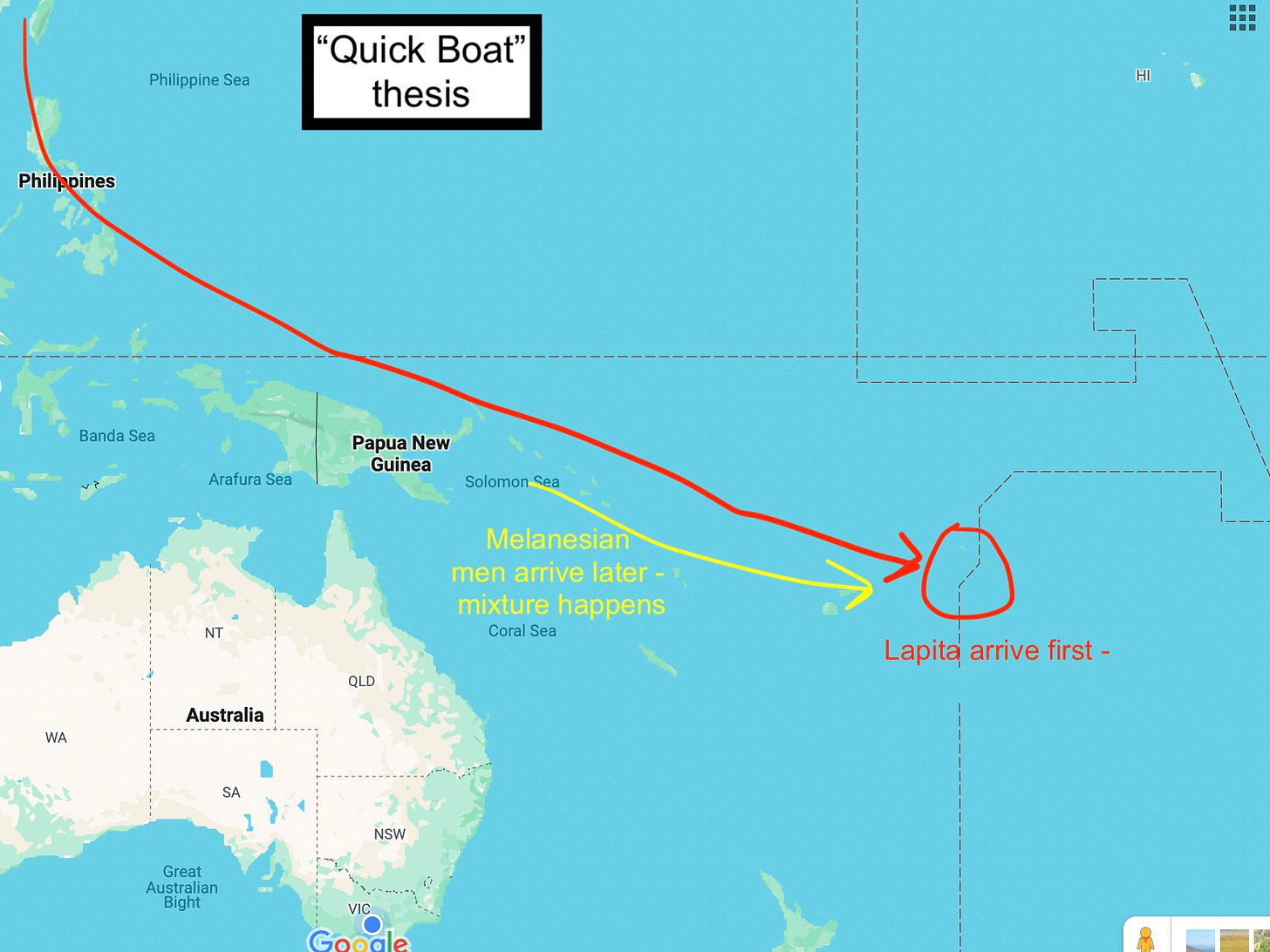
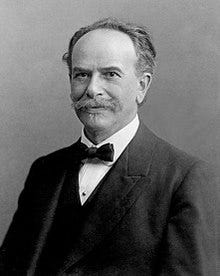



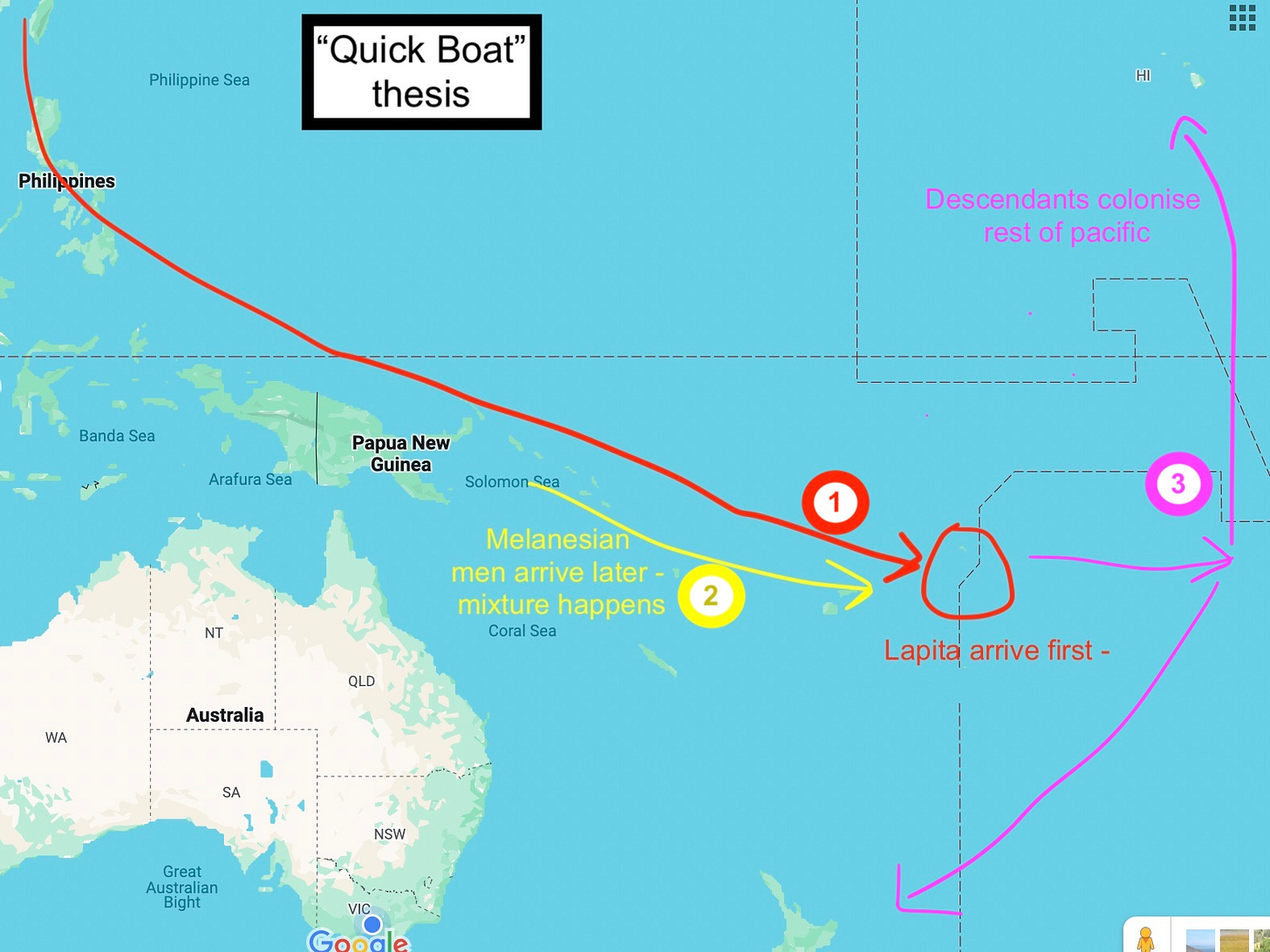
Great overview - one interesting tidbit you left out - Denisovan admixture percentage in Austronesian / Melanesian being one of the highest in the world.
Papuans started with the highest admixture (4-6%), then got diluted in the first Lapita and Austronesian introgressions (down to 1-3% in the Melanesians you mention who then expand outwards), and then that population went out and flowed through Polynesia as you talk about.